Demystifying DNS
DNS as a System
Walking the DNS Tree
In this lesson, we dive into the fundamentals of DNS, exploring how domain names are translated into IP addresses. Grab a coffee and settle in as we revisit key concepts like walking the DNS tree, delegation of authority, the chicken-and-egg problem, and glue records. Each of these elements plays a crucial role in ensuring that the DNS resolution process works seamlessly.
Below is an overview of the topics covered:
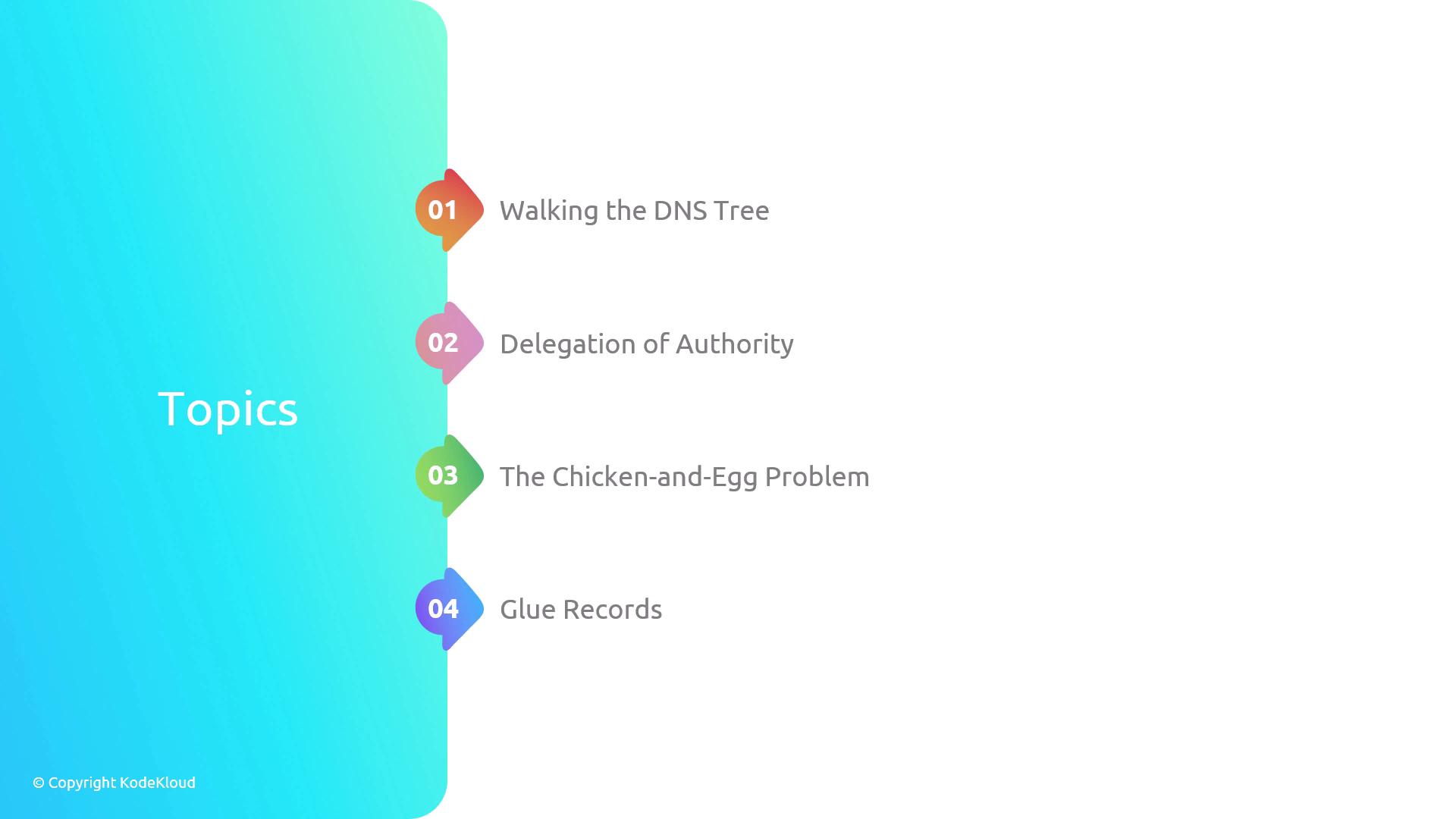
We start by explaining how a domain name is converted into an IP address, a process commonly known as "walking the DNS tree." Next, we discuss the delegation of control for subdomains to different name servers. We then address the intriguing dilemma of how a resolver can locate nameservers that are specified by domain names when DNS itself isn’t fully operational. The concept of glue records is introduced as the solution for resolving such circular dependencies.
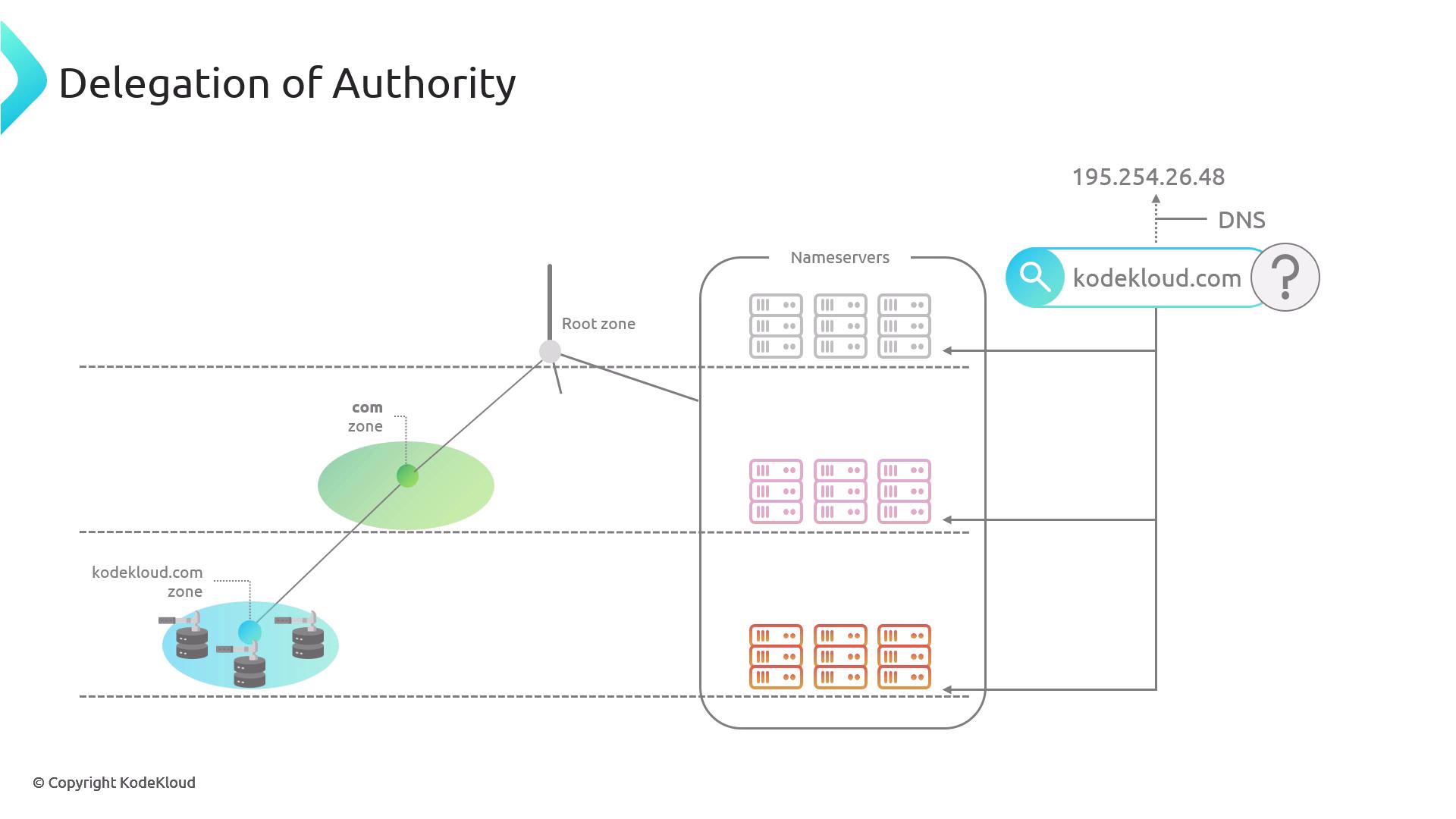

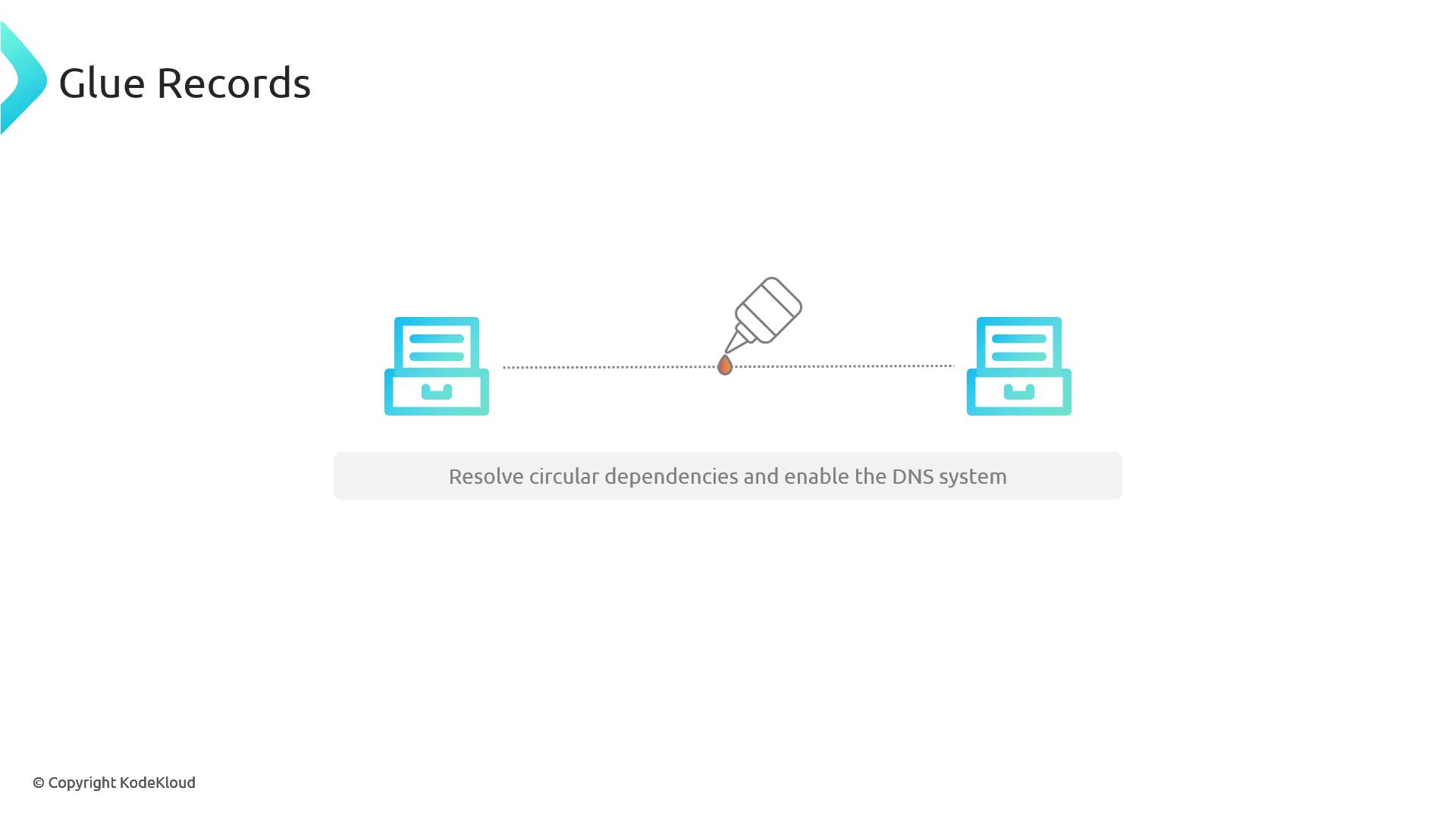
How DNS Resolution Works
DNS resolution is like a detective game with strict rules. Domain names consist of labels separated by dots, and the recursive resolver begins its journey by querying the root name servers. For example, in the domain “example.com,” the resolver starts at the root, then identifies “com” as a subdomain, and finally searches for “example.” If a queried name server does not manage the requested subdomain, it provides the server details for the next zone along the chain.
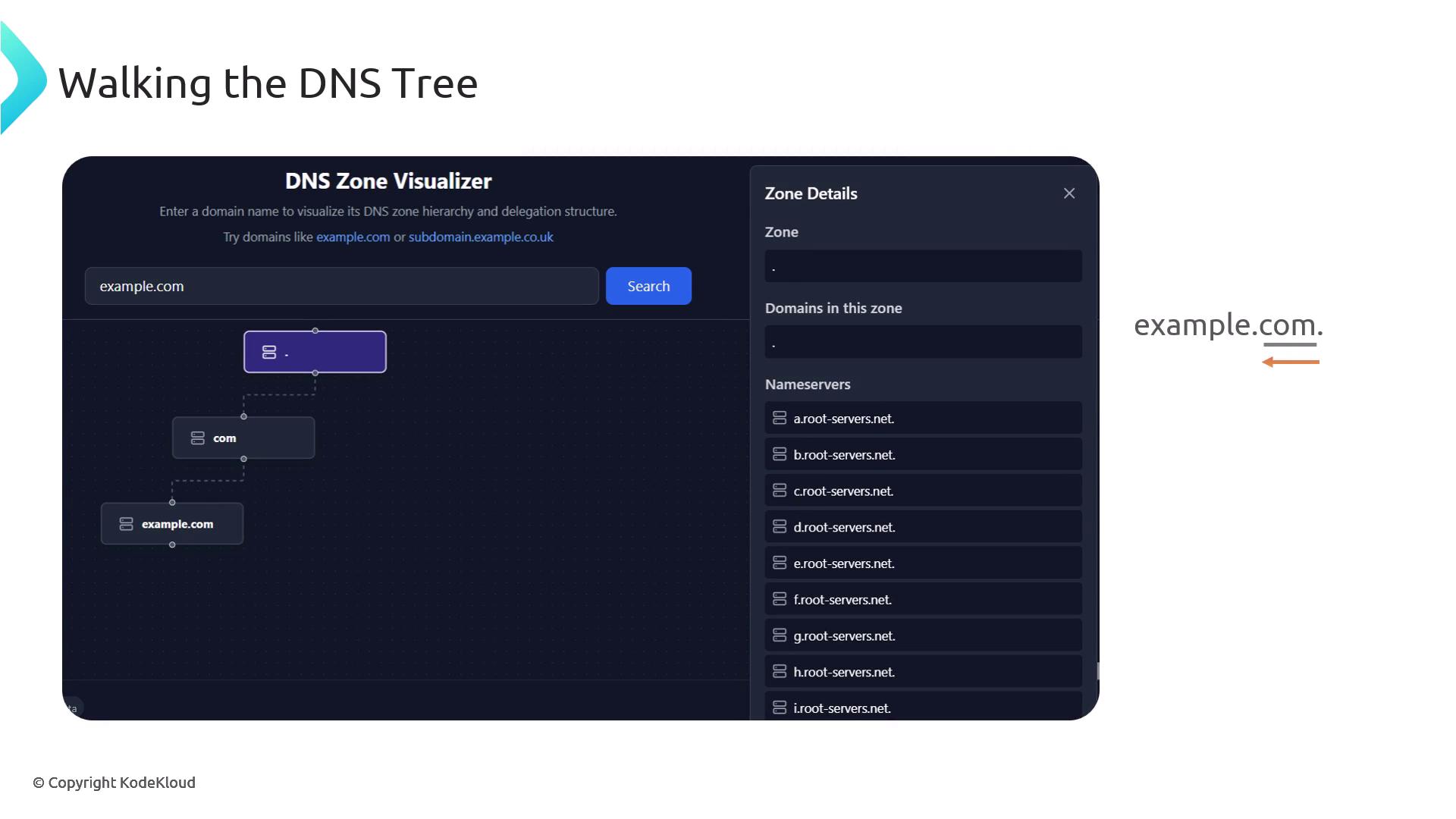
The process continues by querying each label from right to left. When the current name server owns the queried subdomain, it returns the IP address directly. If not, the server ensures the resolution process moves to the correct zone by providing the nameservers responsible for the next segment. This methodical traversal through zone boundaries highlights the importance of both delegation and glue records.

DNS Tree Walk Examples
Example 1: engineer.kodekloud.com
Consider the resolution process for engineer.kodekloud.com. The journey begins at the root zone with a query for "com." Since the root servers do not have direct ownership of "com," they return the appropriate nameservers for that domain, nudging the process into a different zone.
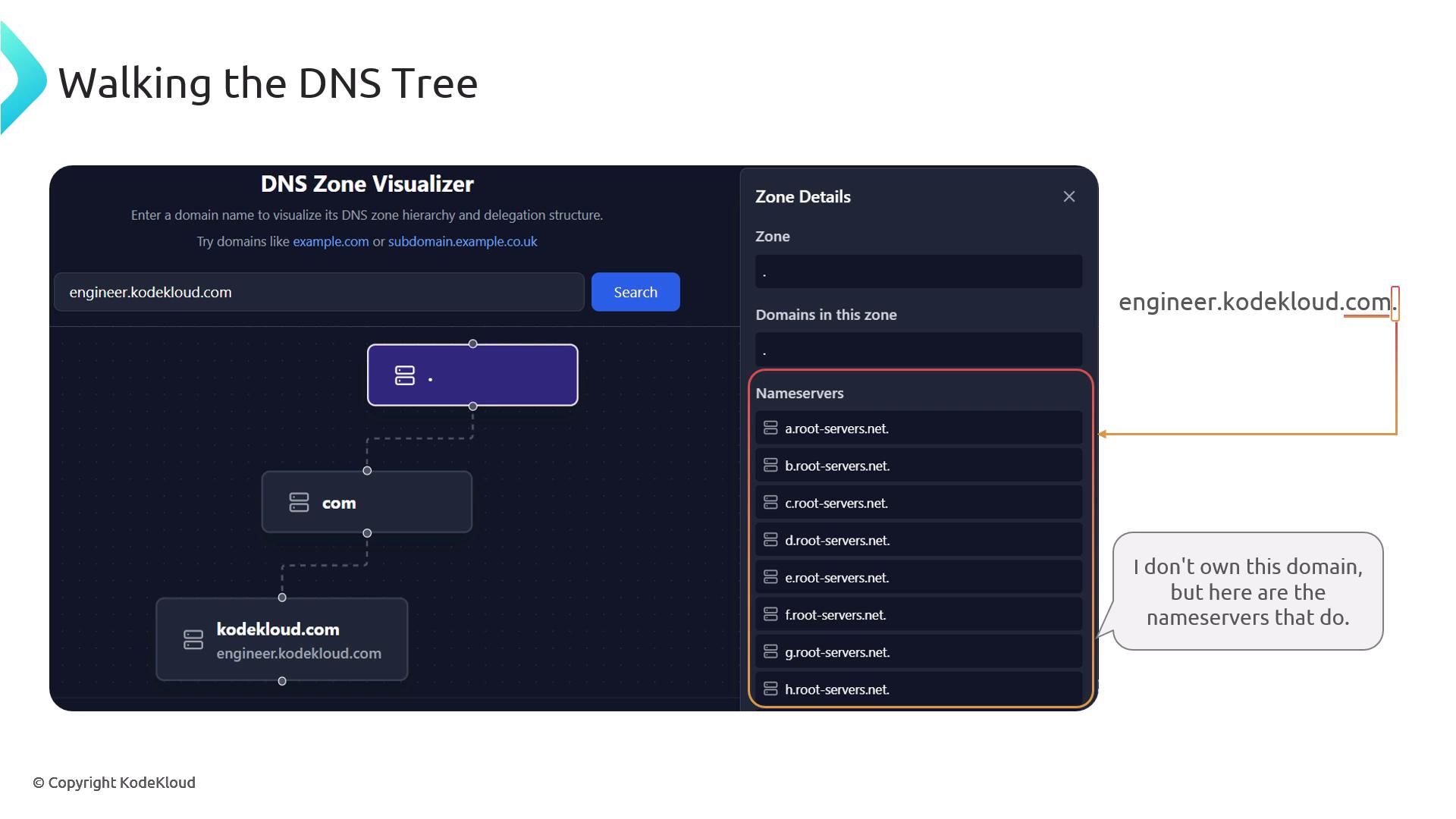
Within the "com" zone, the next query targets "KodeKloud." The nameservers then direct the resolver to the kodekloud.com zone. Finally, querying for "engineer" within this zone yields a direct IP address because the authoritative server for kodekloud.com manages that subdomain.
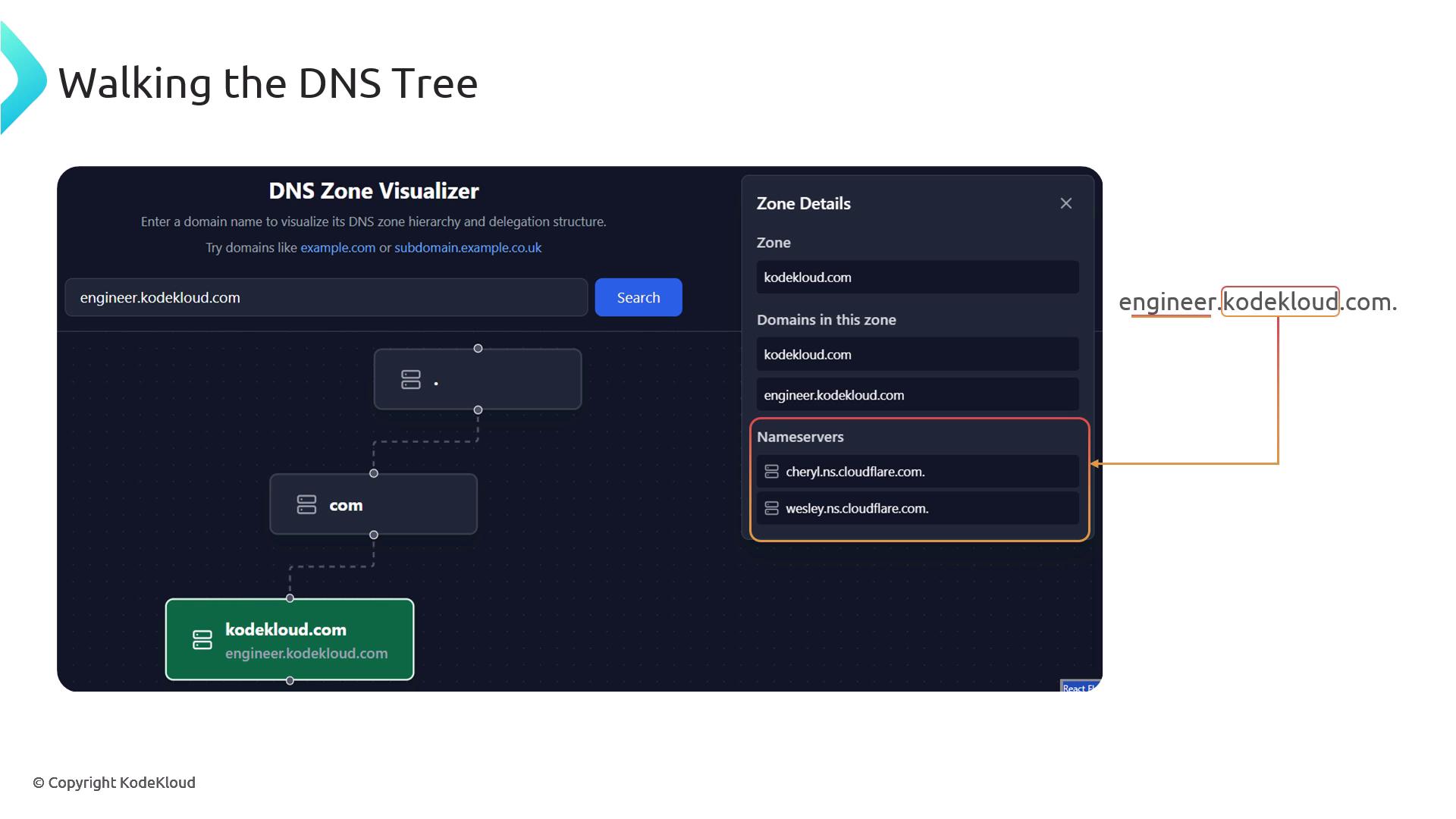
Example 2: museum.co.uk
Let’s examine the resolution process for museum.co.uk. Starting at the root zone, the resolver queries for "uk." The root servers return nameservers for the "uk" domain, moving the query into a new zone.
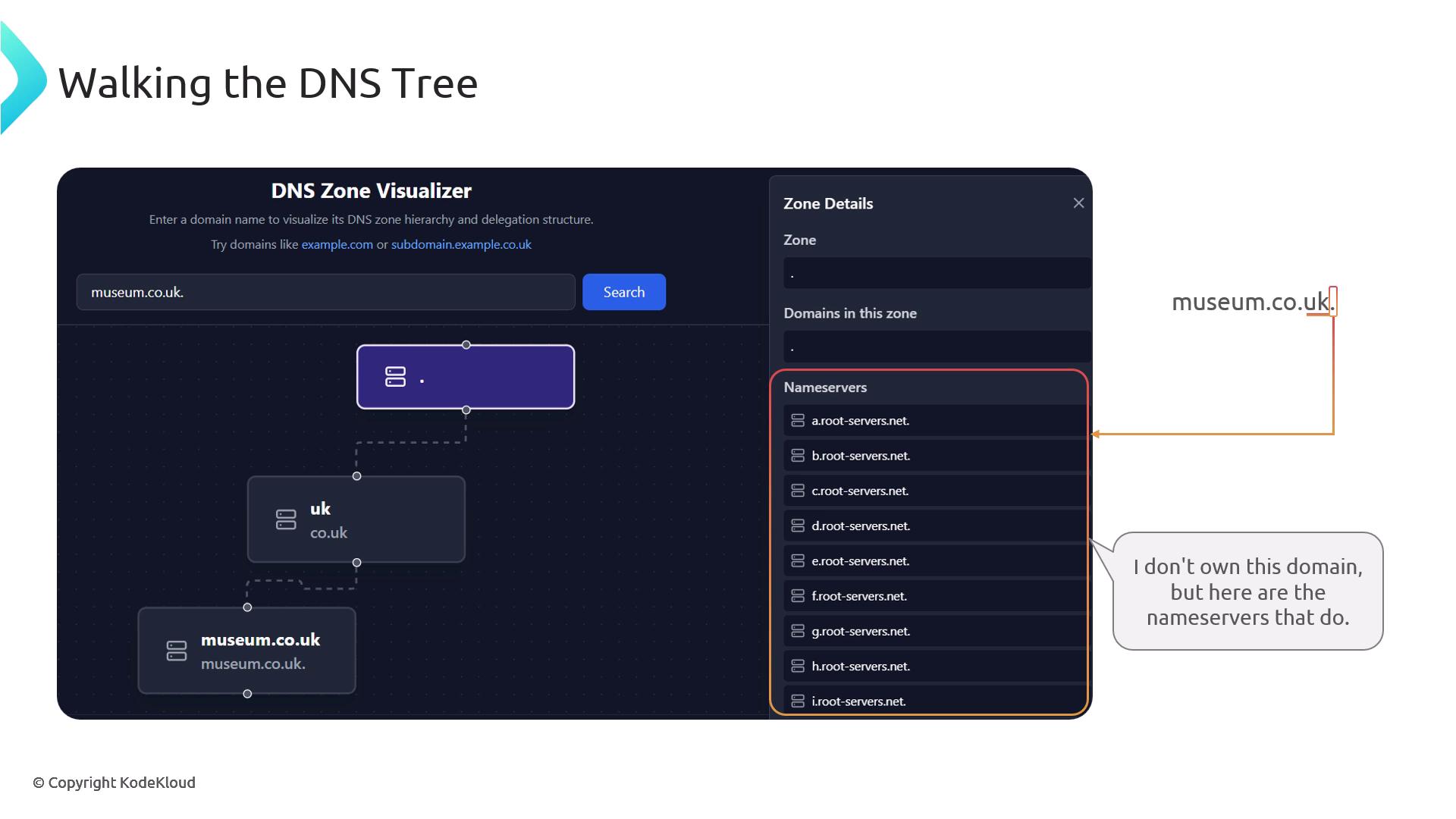
Within the "uk" zone, the query for "co" is answered by the same servers since co.uk is managed within that zone. However, when the resolver requests "museum," the current servers delegate the query to the nameservers dedicated to museum.co.uk. The final authoritative server then returns the IP address.
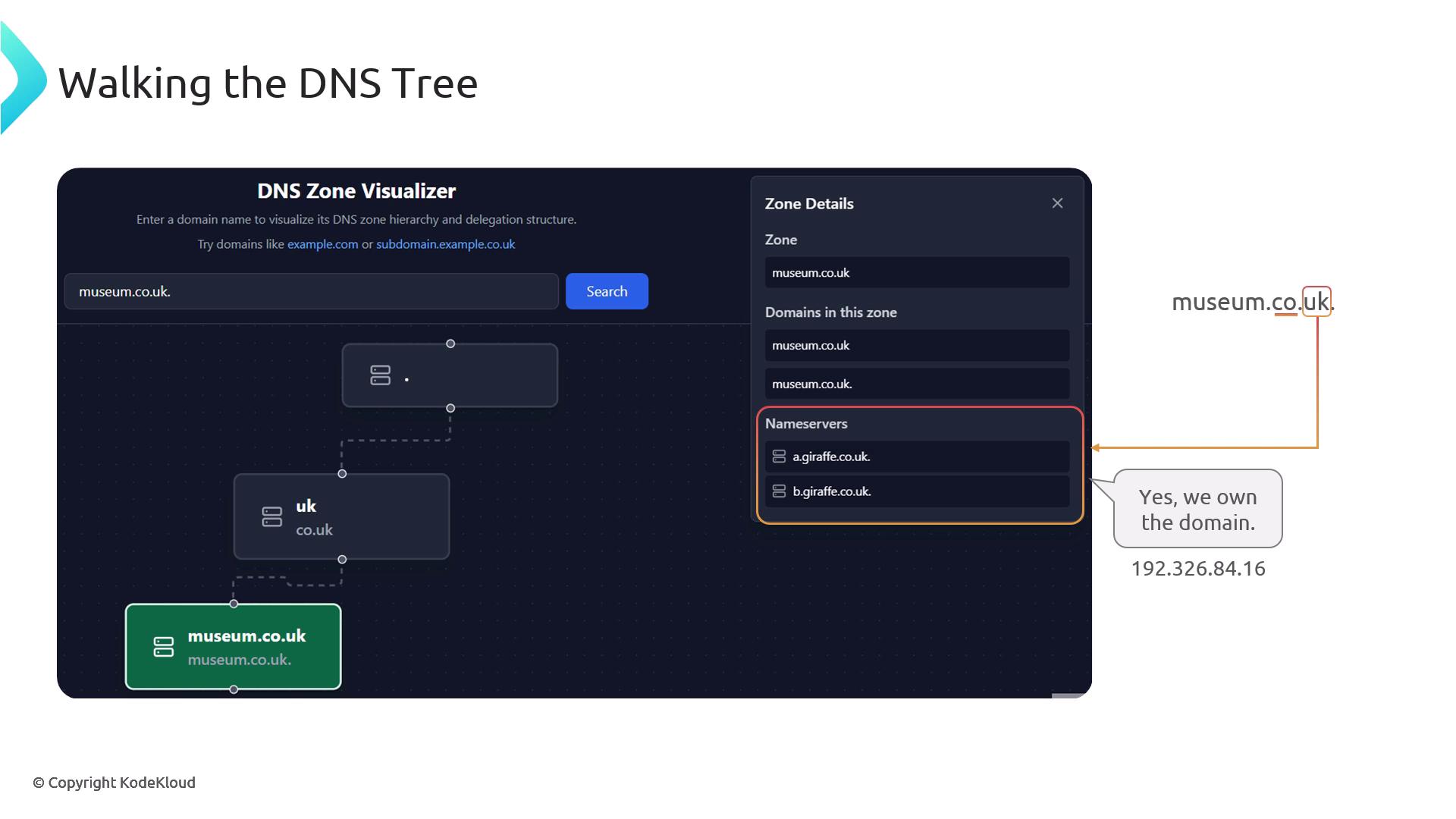
Example 3: staging.jcroyowaun.io
For the domain staging.jcroyowaun.io, the resolution begins at the root zone with a query for "io." As the root servers do not manage "io," they return the appropriate nameservers. Within the "io" zone, querying for "jcroyowaun" directs the resolver to the jcroyowaun.io zone. Finally, the query for "staging" is delegated to a separate set of nameservers, and the authoritative server for staging.jcroyowaun.io returns the IP address.
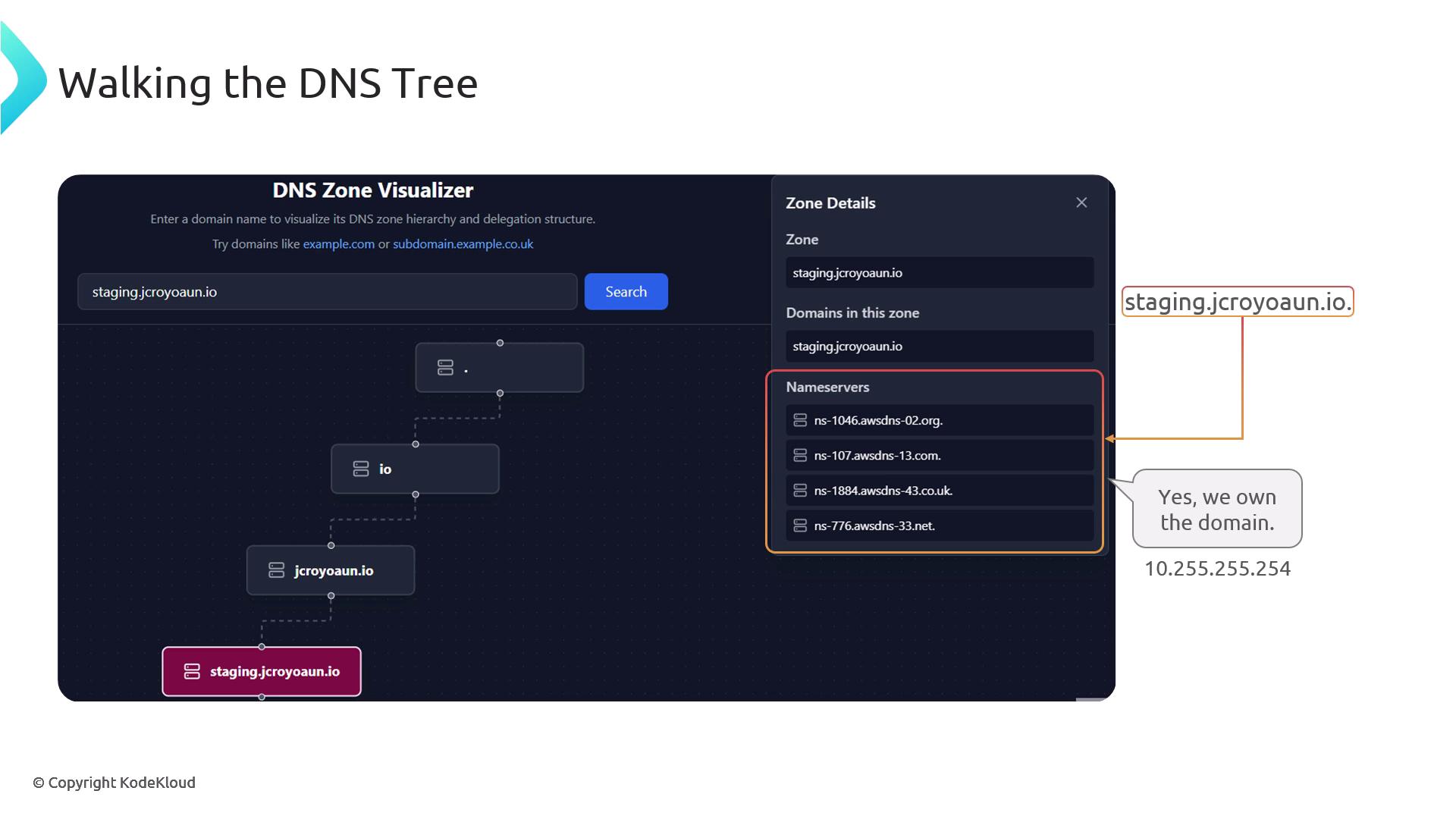
Using DIG to Walk the DNS Tree
Online tools like dnszones.dev help visualize DNS tree traversals, but the command-line tool DIG provides a deeper look into the process. The following command performs a complete DNS trace starting from the root:
$ dig +trace kodekloud.com
;; global options: +cmd
;; Received 811 bytes from 2806:10c:ffff:e::53 in 23 ms
kodekloud.com. 172800 IN NS a.gtld-servers.net.
kodekloud.com. 172800 IN NS b.gtld-servers.net.
kodekloud.com. 172800 IN NS c.gtld-servers.net.
kodekloud.com. 172800 IN NS d.gtld-servers.net.
kodekloud.com. 172800 IN NS e.gtld-servers.net.
kodekloud.com. 172800 IN NS f.gtld-servers.net.
kodekloud.com. 172800 IN NS g.gtld-servers.net.
kodekloud.com. 172800 IN NS h.gtld-servers.net.
kodekloud.com. 172800 IN NS i.gtld-servers.net.
kodekloud.com. 172800 IN NS j.gtld-servers.net.
kodekloud.com. 172800 IN NS k.gtld-servers.net.
kodekloud.com. 172800 IN NS l.gtld-servers.net.
kodekloud.com. 172800 IN NS m.gtld-servers.net.
;; Query time: 29 msec
;; SERVER: 10.255.255.254#53(10.255.255.254) (UDP)
;; WHEN: Thu Jan 16 23:33:22 CST 2025
;; MSG SIZE rcvd: 176
For a reverse DNS lookup, you might use:
$ dig -x 2806:10c:ffff:e
;; global options: +cmd
;; Get answer:
;; ->>HEADER<<- opcode: QUERY, status: NOERROR, id: 62731
;; flags: qr rd ra; QUERY: 1, ANSWER: 1, AUTHORITY: 0, ADDITIONAL: 1
;; OPT PSEUDOSECTION:
; EDNS: version: 0, flags:; udp: 512
;; QUESTION SECTION:
;je.o.0.0.0.0.0.0.0.0.0.0.f.f.f.f.0.c.0.1.6.0.8.2.ip6.arpa. IN PTR
;; ANSWER SECTION:
je.o.0.0.0.0.0.0.0.0.0.0.f.f.f.f.0.c.0.1.6.0.8.2.ip6.arpa. 29869 IN PTR 2806-10c-ffff-0000-0000-0000-000e.ipv6.infinitum.net.mx.
;; Query time: 29 msec
;; SERVER: 10.255.255.254#53(10.255.255.254) (UDP)
;; WHEN: Thu Jan 16 23:33:22 CST 2025
;; MSG SIZE rcvd: 176
After the initial response from a root server, the TLD name server takes over. For instance, a TLD nameserver (e.g., jtld-servers.net) might provide Cloudflare's nameservers along with the IP addresses for kodekloud.com:
kodekloud.com. 172800 IN NS cheryl.ns.cloudflare.com.
kodekloud.com. 172800 IN NS wesley.ns.cloudflare.com.
...
kodekloud.com. 300 IN A 104.26.10.250
kodekloud.com. 300 IN A 124.26.11.250
kodekloud.com. 300 IN A 172.67.68.105
Cheryl's Cloudflare nameserver then returns the final IP addresses, with each response clearly indicating the server responsible. You may notice that running the DIG +trace command multiple times yields responses from different nameservers. This is a result of DNS load balancing and redundancy.
$ dig +trace kodekLOUD.com
$ dig +trace kodekLOUD.com
$ dig +trace kodekLOUD.com
Delegation of Authority and Glue Records
DNS zones are used to define ownership. When a subdomain has its own NS records separate from its parent, this indicates a delegation of authority—a formal transfer of control for that subdomain. The parent zone retains a copy of the subdomain's NS records to maintain consistency.
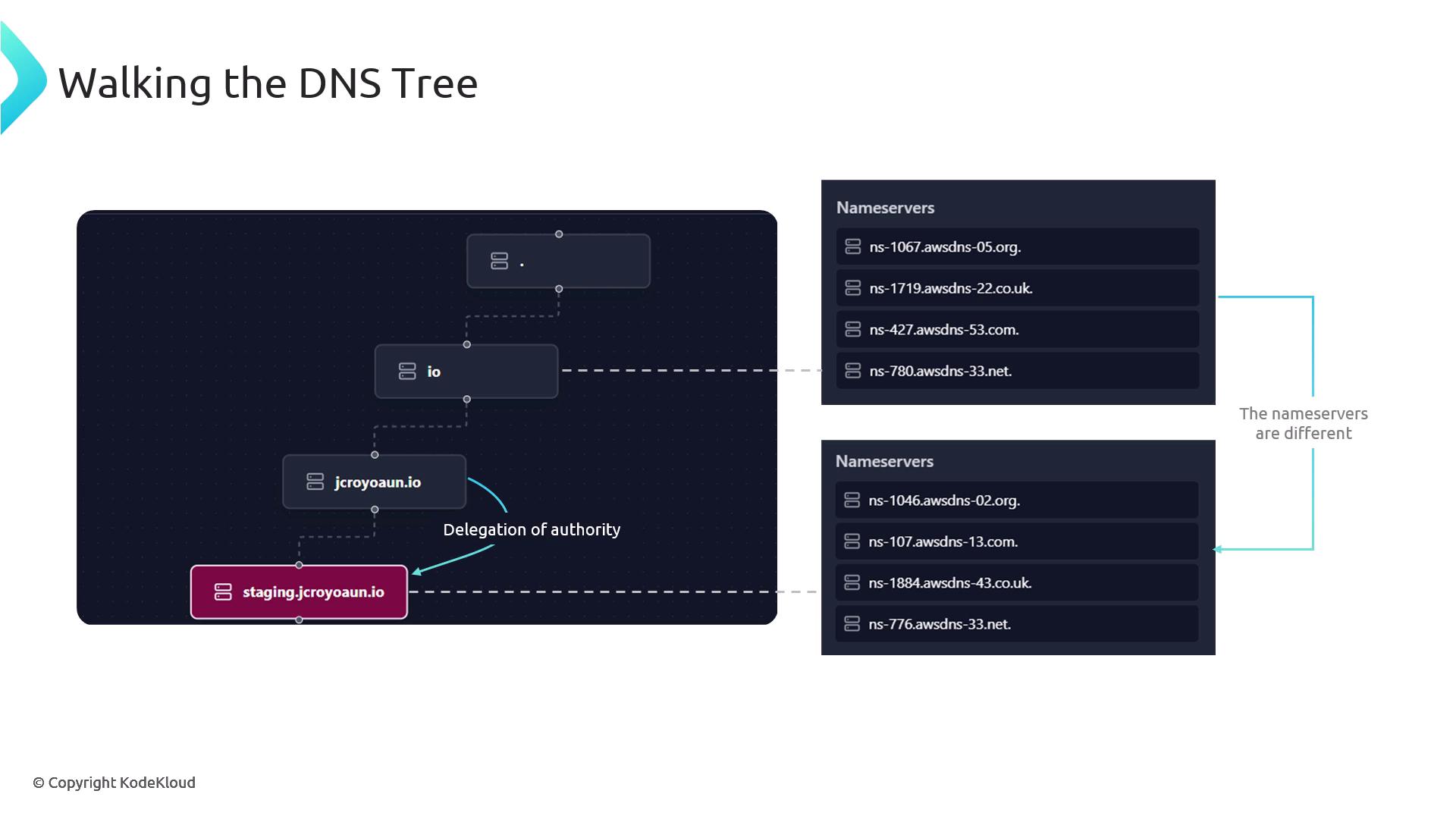
A common challenge arises when the NS records are domain names themselves. Without a proper mechanism, resolving their IP addresses could create a circular dependency—the infamous chicken-and-egg problem. DNS addresses this by:
- Using pre-configured root hints in every recursive resolver. These hints contain IP addresses for all the root name servers, ensuring that the initial query can always be reached.
- Including glue records in the parent zone for delegated subdomains. Glue records are A (IPv4) or AAAA (IPv6) records that provide the IP addresses for the delegated name servers, thereby breaking the circular dependency.
For example, the NS and glue records for kodekloud.com in the com zone might appear as follows:
; NS records for the delegation
kodekloud.com. 172800 IN NS cheryl1.ns.cloudflare.com.
kodekloud.com. 172800 IN NS wesley.ns.cloudflare.com.
; Glue records
cheryl1.ns.cloudflare.com. 172800 IN A 108.162.192.83
172800 IN AAAA 2606:4700:50::adf5:3a53
wesley.ns.cloudflare.com. 172800 IN A 108.162.193.246
172800 IN AAAA 2606:4700:58::adf5:3bf6
Note
To verify glue records using DIG, you can execute the following command, which directly queries an authoritative nameserver with the +additional flag:
$ dig @a.gtld-servers.net. kodekloud.com +additional
;; DiG 9.10.6 ;;
;; global options: +cmd
;; Got answer:
;; ->>HEADER<<- opcode: QUERY, status: NOERROR, id: 14538
;; flags: qr rd; QUERY: 1, ANSWER: 0, AUTHORITY: 2, ADDITIONAL: 13
;; QUESTION SECTION:
;kodekloud.com. IN A
;; AUTHORITY SECTION:
kodekloud.com. 172800 IN NS cheryl.ns.cloudflare.com.
kodekloud.com. 172800 IN NS wesley.ns.cloudflare.com.
;; ADDITIONAL SECTION:
cheryl.ns.cloudflare.com. 172800 IN A 108.162.192.83
cheryl.ns.cloudflare.com. 172800 IN A 172.64.32.83
cheryl.ns.cloudflare.com. 173845 IN A 173.245.58.85
cheryl.ns.cloudflare.com. 172800 IN AAAA 2606:4700:50::adf5:3a53
cheryl.ns.cloudflare.com. 172800 IN AAAA 2606:4700:50::c40:2053
wesley.ns.cloudflare.com. 172800 IN A 108.162.194.83
wesley.ns.cloudflare.com. 172800 IN A 172.64.33.246
wesley.ns.cloudflare.com. 172800 IN A 173.245.58.85
wesley.ns.cloudflare.com. 172800 IN AAAA 2606:4700:50::adf5:3bf6
wesley.ns.cloudflare.com. 172800 IN AAAA 2606:4700:50::c2a:21f6
When querying an authoritative server directly, you might see a warning indicating that recursion is disabled:
$ dig @a.gtld-servers.net. kodekloud.com +additional
;; <<>> DiG 9.10.6 <<>> @a.gtld-servers.net. kodekloud.com +additional
;; global options: +cmd
Got answer:
;; ->>HEADER<<- opcode: QUERY, status: NOERROR, id: 14538
;; flags: qr rd; QUERY: 1, ANSWER: 0, AUTHORITY: 2, ADDITIONAL: 13
;; WARNING: recursion requested but not available
;; OPT PSEUDOSECTION:
; EDNS: version: 0, flags:; udp: 4096
;; QUESTION SECTION:
;kodekloud.com. IN A
;; AUTHORITY SECTION:
kodekloud.com. 172800 IN NS cheryl.ns.cloudflare.com.
kodekloud.com. 172800 IN NS wesley.ns.cloudflare.com.
;; ADDITIONAL SECTION:
cheryl.ns.cloudflare.com. 172800 IN A 108.162.220.53
cheryl.ns.cloudflare.com. 172800 IN A 172.64.33.20
cheryl.ns.cloudflare.com. 172800 IN AAAA 2606:4700:3035::ac43:c053
cheryl.ns.cloudflare.com. 172800 IN AAAA 2606:4700:3037::681c:95f5
wesley.ns.cloudflare.com. 172800 IN A 104.22.6.205
wesley.ns.cloudflare.com. 172800 IN A 172.64.33.20
wesley.ns.cloudflare.com. 172800 IN AAAA 2606:4700:30::681c:6b40
wesley.ns.cloudflare.com. 172800 IN AAAA 2606:4700:3037::ac43:c6c2
This combination of delegation, glue records, and caching ensures that the DNS system functions efficiently without needing to perform an entire tree walk for every query.
Tracking DNS Query Flow Using strace
Advanced users can leverage tools like strace to inspect the low-level system calls made during DNS resolution. The following command provides insight into each step of the process:
$ strace -f -e trace=network dig +trace +additional @jcroyoan.io NS
The output might include:
Connecting to a root or io nameserver:
connect(18, {sa_family=AF_INET, sin_port=htons(53), sin_addr=inet_addr("199.7.91.13")}, 16) = 0 recvmsg(18, {msg_name={sa_family=AF_INET, sin_port=htons(53), sin_addr=inet_addr("199.7.91.13")}, ... )Connecting to c0.nic.io:
connect(18, {sa_family=AF_INET, sin_port=htons(53), sin_addr=inet_addr("65.22.162.17")}, 16) = 0 recvmsg(18, {msg_name={sa_family=AF_INET, sin_port=htons(53), sin_addr=inet_addr("65.22.162.17")}, ... )Interacting with AWS nameserver IPs:
sendto(19, "[\37\1\0\1\0\0\0\0\6ns-107.tawsdns3.com\38", MSG_NOSIGNAL, {sin_addr=inet_addr("8.8.8.8")}, ... ) recvmsg(19, {msg_name={sa_family=AF_INET, sin_port=htons(53), sin_addr=inet_addr("8.8.8.8")}, ... )
This demonstrates that although the DNS tree walk consistently begins at the root, cached answers and direct queries to recursive resolvers (such as 8.8.8.8) can enhance performance.
For even more detailed tracking, try:
$ strace -f -e trace=network dig +trace +additional +all jcroyoaun.io NS
This command provides an in-depth view of all connect, sendto, and recvmsg calls made as the query traverses different parts of the DNS hierarchy.
Zone Synchronization and Final Thoughts
DNS ensures consistency across its distributed system through robust replication mechanisms. Zone transfers keep nameservers synchronized, enabling all copies of DNS records to remain up-to-date.

The glue records—both A and AAAA types—provide the reliable IP addresses that are essential for maintaining the integrity of the DNS resolution process. By breaking circular dependencies, they support a distributed system where independent management of zones is possible while ensuring global consistency.
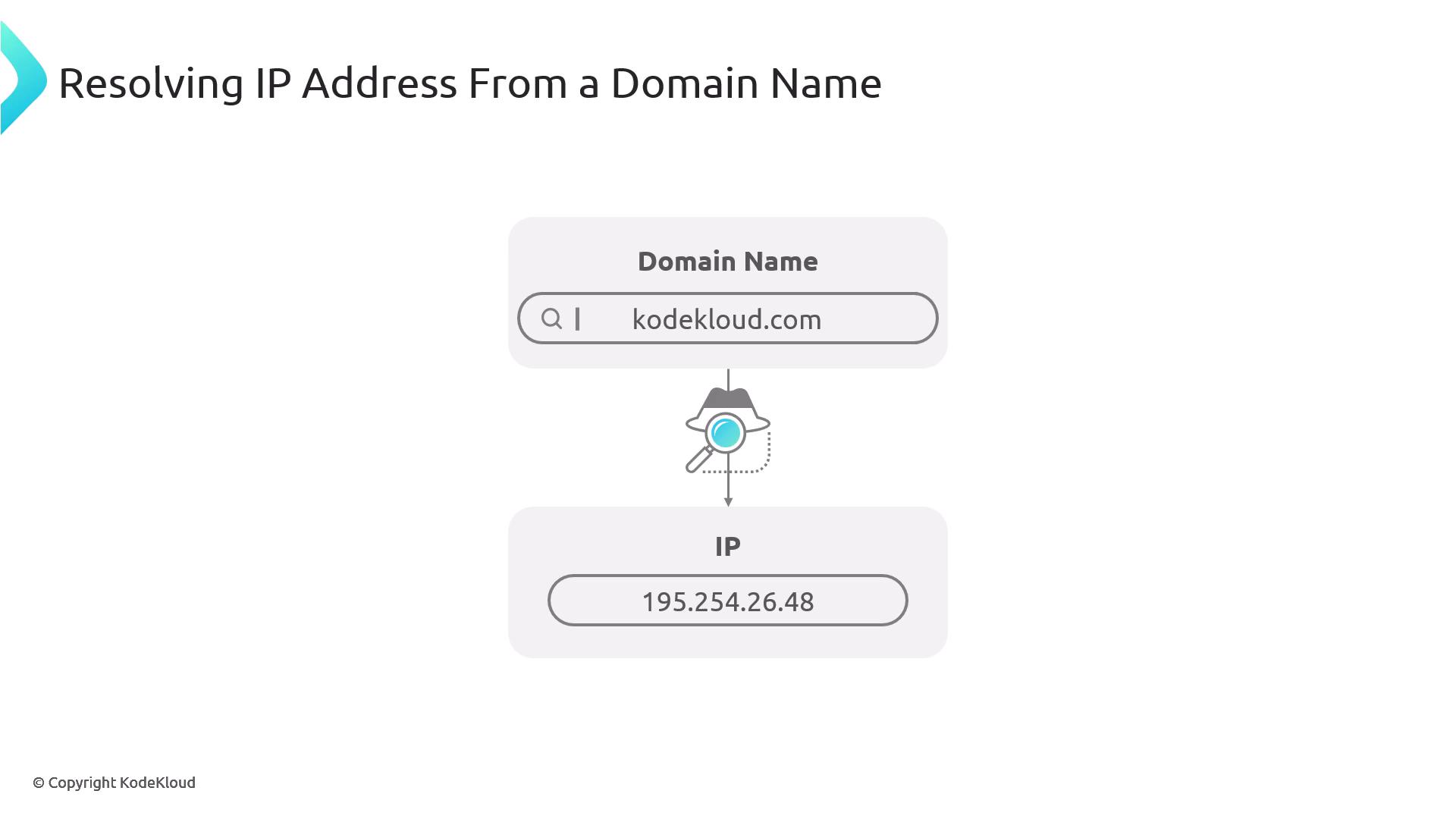

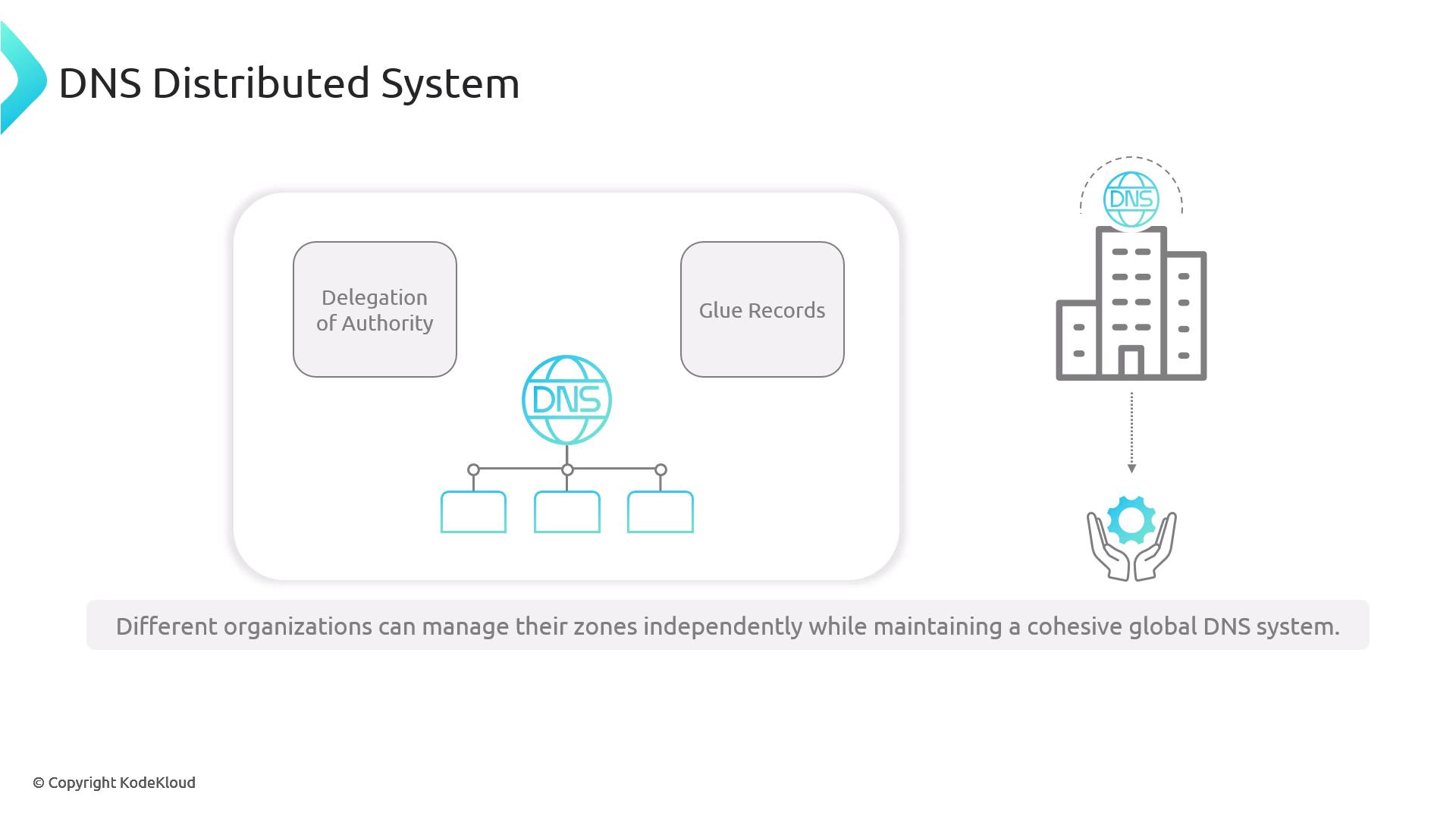
In summary, understanding the process of walking the DNS tree, the delegation of authority, and the use of glue records offers valuable insight into the resilient, scalable, and distributed nature of the DNS system.
Happy exploring!
Watch Video
Watch video content